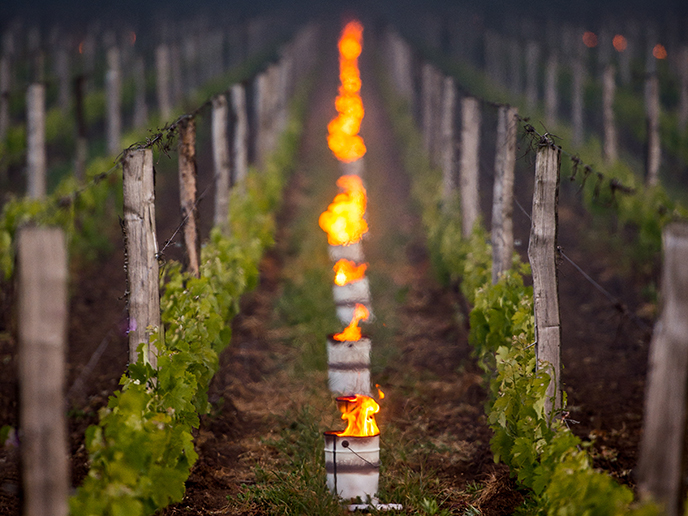Can flaming torches really save a vineyard from frost?
There are many things that a vintner can control – where to establish a vineyard, which varieties to plant, when to apply water and fertiliser. But the weather is not one of them. Earlier this year, EUR 2bn worth of wine was lost from French vineyards alone, following a period of extreme cold weather. When European winemakers are faced with sub-zero temperatures that can spoil the tender young grapes, they may reach for their torches – creating otherworldy scenes as hundreds of flaming lanterns are spread every few metres through the vineyard. Do the lanterns work? And can we develop a more environmentally friendly alternative? To answer this, it’s necessary to understand the conditions under which frosts form. Bas van de Wiel, a professor of atmospheric physics at Delft University of Technology, explains that low temperatures are just one element needed for frost to occur. “At night, the ground cools, and creates a pool of cold air. If the air becomes quiet, temperatures can become very cool near the surface,” he explains. With sufficient wind, the blanket of cold air is disrupted before it can grow cold enough to create frost. “On a windy night, things keep rolling. But when the sky is clear, the surface can cool because of heat radiation, and you see a collapse of turbulence.” Van de Wiel’s research, supported by EU funding, shows that wind speeds lower than 3 metres per second at nose height lead to frost conditions. Rather than warming the grapevines directly, van de Wiel explains, torches work by disrupting this static layer of cold air. “Suppose the boundary layer is dead – sometimes you have local ditches, warm spots. Those act like small chimneys, and this movement adds to the exchange of energy.” To test how effective disrupting this boundary layer can be, van de Wiel and his colleagues installed large ventilators in several vineyards in the Netherlands. “The results were so good, harvest increased 100 %, and we could perfect show that temperatures and harvests increased with proximity to the wind machines.” He adds that flaming torches are very inefficient, and the large, silent ventilators used by his team would not be as labour intensive either. Good news for vintners, though photographers and sightseers may miss the spectacle of springtime vineyards lit by hundreds of glittering torches. Click here to find out more about van de Wiel’s research: Heat transfer theory explains sudden cold snaps.
Keywords
Frost, torch, fire, weather, cold, grape, vineyard, vintner



